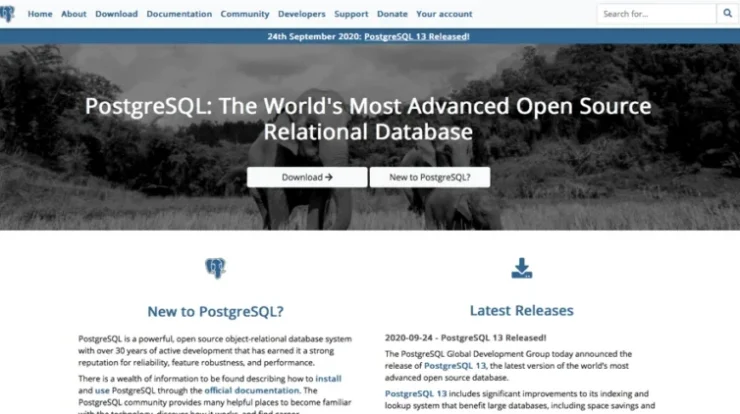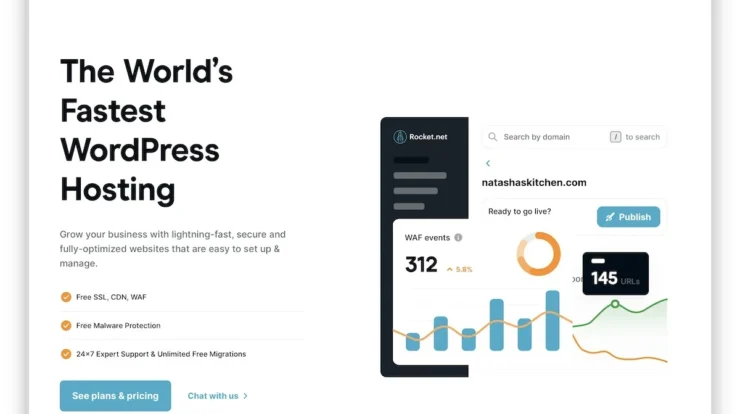
Building dynamic, user-friendly web applications with React requires robust and reliable hosting solutions to ensure optimal performance and scalability.
Choosing the right hosting platform significantly impacts the speed, security, and overall user experience of your React-powered creations.
This exploration dives into the crucial aspect of selecting the best hosting for React developers, outlining key factors developers need to consider.
The right hosting environment directly influences a React application’s responsiveness, uptime, and the capacity to handle increasing user traffic.
A fast, secure, and scalable platform empowers developers to create and deploy engaging applications without performance bottlenecks or security vulnerabilities.
From simple single-page applications to complex, data-intensive projects, the chosen hosting solution plays a crucial role in delivering a seamless and satisfying user experience.
Understanding the nuances of various hosting options – including shared hosting, VPS servers, dedicated servers, and cloud platforms – is essential for React developers to make informed decisions.
This comprehensive guide provides a practical comparison of hosting services tailored to the specific needs of React developers, focusing on features like deployment tools, server-side rendering options, and database integration.
Choosing the best hosting for react devs is not simply a technical exercise; it’s a strategic move that impacts application performance and developer efficiency. Effective hosting allows React developers to focus on coding innovative features and improving the user interface, not on managing infrastructure issues.
Choosing the Right Hosting for React Applications
A key consideration for React developers is selecting a hosting platform that effectively supports the unique needs of their applications.
Choosing the appropriate hosting strategy directly impacts application performance, user experience, and long-term scalability.
The best hosting solution for React applications must balance speed, security, and reliability to ensure a seamless user experience.
A platform capable of handling fluctuations in traffic is crucial for React applications, as user engagement can rapidly increase.
React’s component-based architecture requires a hosting environment that can efficiently serve dynamic content and manage the intricate dependencies between these components.
Factors like server response time, database accessibility, and the ability to manage evolving codebases influence the choice of hosting provider.
Specific requirements for React applications often differ from those of other web frameworks. For example, the frequency of updates and the complexity of data interactions within React applications can impact server-side performance and scalability requirements.
Hosting providers should offer tools and resources to simplify deployment and management of React applications, including straightforward APIs and user-friendly dashboards.
A strong focus on security is essential, as React applications are often vulnerable to common web attacks if the hosting platform isn’t robust.
Features like automatic backups, secure SSL certificates, and regular security audits are vital for maintaining data integrity and safeguarding against potential breaches.
Serverless functions are becoming increasingly important for React applications, as they allow for flexible scaling and simplified management of background processes.
The selection process should also consider the cost-effectiveness of the hosting solution, balancing quality with affordability.
Finally, comprehensive documentation and excellent customer support are essential for ensuring a smooth transition and addressing any technical challenges that might arise.
Ultimately, choosing the best hosting provider for React applications involves a thorough evaluation of various factors to ensure that the chosen platform effectively meets the demands of the application’s specific needs.
Scalability and Performance Considerations for React Hosting
A critical aspect of selecting the best hosting for React applications is scalability. React applications, particularly those supporting substantial user traffic or complex data interactions, demand a hosting platform capable of handling increased load without compromising performance.
Choosing a hosting solution that can adapt to fluctuating demands is paramount. Sudden surges in user activity can overwhelm poorly scaled hosting environments, leading to slow response times and a frustrating user experience.
A key feature to look for in a React hosting provider is the capacity for automatic scaling. This feature automatically adjusts server resources based on real-time traffic, ensuring optimal performance regardless of user load.
Performance is inextricably linked to the selection of the right hosting platform. Slow loading times for React applications directly translate to a negative user experience, impacting engagement and potentially driving users to competitors.
React developers should prioritize hosting solutions optimized for JavaScript execution and capable of delivering static and dynamic content swiftly. This includes assessing server response times and considering factors like Content Delivery Networks (CDNs), which can significantly accelerate content delivery.
High-performance hosting environments are essential for managing complex React applications. This is particularly true for projects utilizing extensive JavaScript functionalities, advanced state management libraries, or integrating with data-heavy APIs. Such environments should ensure fast processing, minimized latency, and seamless interaction with other components.
Efficient resource allocation is a critical consideration for React application hosting. The hosting provider must be able to allocate sufficient server resources to handle the demands of the application without over-provisioning, minimizing unnecessary costs.
An optimized hosting platform should support the unique demands of React applications, minimizing downtime, maximizing performance, and handling a wide range of use cases.
The selection of the best hosting platform for React applications requires careful consideration of the anticipated growth and potential fluctuations in user traffic, emphasizing the necessity for a scalable and robust infrastructure.
Beyond scalability, the hosting provider’s ability to handle the specific technical requirements of a React application, such as database accessibility and efficient server configurations, is also significant.
Scalability and Performance for React Applications
Scalability and performance are crucial factors when choosing a hosting solution for React applications, especially as the application grows and user base expands.
A robust hosting platform must be able to handle increasing traffic loads without compromising response times or application stability. This is particularly important for React applications, which often involve complex interactions and data fetching, demanding optimal performance for a positive user experience.
The ability to scale resources, such as CPU, memory, and bandwidth, is essential for ensuring seamless operation and preventing bottlenecks that negatively impact application functionality.
This scalability is intricately linked to the hosting environment’s ability to handle fluctuating user demand, dynamically adjusting resources as needed. A hosting provider that emphasizes scalability and performance is critical for accommodating the evolving needs of a growing React application.
Effective hosting platforms for React applications also prioritize efficient caching strategies. Caching frequently accessed data and assets can significantly reduce server load and improve response times, leading to a more responsive and user-friendly experience.
Optimized server configurations are another vital aspect. Choosing a hosting provider with pre-configured and optimized servers can markedly improve the speed and efficiency of the React application, leading to better performance.
Modern React applications often leverage content delivery networks (CDNs). A reliable hosting platform integrates seamlessly with CDNs to deliver static content quickly and efficiently across the globe, thereby enhancing user experience by reducing latency. The use of a CDN effectively improves performance and overall responsiveness of the React application, a critical consideration for a positive user experience.
Monitoring and managing resources are integral to maintaining optimal performance. A hosting platform that allows for detailed monitoring of CPU usage, memory consumption, and network traffic provides invaluable insights for optimizing the application’s performance and proactively identifying potential bottlenecks.
Selecting a hosting solution capable of supporting these requirements is key to maintaining a swift and seamless user experience with a React application. This includes considering factors such as server-side rendering and static site generation, which can further enhance performance and user experience for React applications, especially for static content.
This element of best hosting for React devs focuses on ensuring that the chosen hosting solution can meet future growth demands, maintain optimal response times under varying loads, and deliver a high-quality user experience consistently.
Scalability and Performance for React Applications
Scalability is crucial for any web application, especially for those built using React, where the complexity of the application can increase exponentially with more users, features, and data.
A robust hosting platform should be capable of handling increasing loads without compromising performance or user experience.
This means the hosting infrastructure needs to be able to dynamically adjust resources—CPU, memory, and bandwidth—as the application demands grow.
For React developers, this often translates to choosing a hosting solution that supports containerization technologies like Docker or Kubernetes.
Such technologies allow developers to package their React applications and dependencies into isolated containers, ensuring consistent performance across different environments.
A good hosting provider will offer managed Kubernetes or other container orchestration services, abstracting the complexities of managing containers and promoting scalability for React apps.
Furthermore, the hosting platform should provide options for load balancing and caching strategies.
Load balancing distributes traffic across multiple servers, preventing any single point of failure and maintaining responsiveness during peak periods.
Caching mechanisms store frequently accessed data on intermediary servers, reducing the load on the primary application servers and delivering faster response times, vital for a positive user experience in React applications.
Choosing a hosting provider that understands the specific performance needs of React applications, including JavaScript execution speed, optimized asset delivery, and responsive design, is paramount for success.
Excellent hosting for React developers will not only handle growing data requirements but also consistently provide fast load times and smooth transitions between pages, leading to a superior user experience.
Implementing these scalability and performance features through the right hosting is essential to building a successful and user-friendly React application. The best hosting for React developers considers the potential for growth and leverages the appropriate technologies to adapt to increasing loads, which ensures a frictionless user experience.
Choosing the right hosting platform is crucial for React developers, directly impacting application performance, scalability, and ultimately, user experience.
The discussed hosting options, from cloud-based solutions optimized for speed and flexibility to managed services offering streamlined deployment and maintenance, showcase the wide spectrum of choices available.
Ultimately, the “best hosting for React devs” depends on specific project needs and developer preferences. Factors like anticipated traffic volume, budget constraints, and desired level of technical control all influence the ideal selection.
A meticulously chosen hosting solution empowers React developers to focus on building robust and engaging applications, without being bogged down by technical infrastructure complexities.
Therefore, carefully considering these hosting options and their unique advantages is paramount for React developers seeking to efficiently deploy and maintain their applications. The right “best hosting for React devs” significantly contributes to both the development process and the final product’s performance, ensuring a positive user experience. Factors such as scalability, reliability, and the availability of developer-friendly tools are critical when evaluating different hosting platforms. Modern React applications often involve complex interactions, and the appropriate hosting solution will facilitate the seamless delivery of these features and a smooth user experience.






